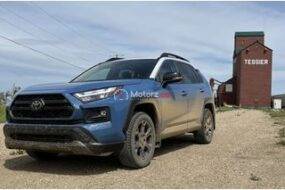As parents, our primary responsibility is to ensure our children’s safety and well-being. One of the most crucial aspects of child safety is proper car seat usage. A correctly installed and used car seat can significantly reduce the risk of serious injury or death in a car accident. In this blog post, we’ll delve into the essential tips for car seat safety, helping you make informed decisions and keep your little ones safe on the road.
Choosing the Right Car Seat
Age, weight, and height: The appropriate car seat depends on your child’s age, weight, and height. Consult the manufacturer’s guidelines and safety experts to determine the best option for your child.
Rear-facing vs. forward-facing: Keep your child rear-facing as long as possible, typically until they reach the maximum height or weight limit of their car seat. This position offers superior head and neck protection in a Car Seat Safety.
Convertible car seats: Consider a convertible car seat that can be used both rear-facing and forward-facing, as your child grows.
Booster seats: Once your child outgrows their harness, they should use a booster seat to position the seat belt correctly across their chest and lap.
Proper Installation
Read the manual: Always refer to the car seat manufacturer’s manual for specific installation instructions.
LATCH or seat belt: Use either the Lower Anchors and Tethers for Children (LATCH) system or the seat belt to secure the car seat.
Tightness: Ensure the car seat is securely fastened and doesn’t move more than an inch in any direction.
Tether strap: If applicable, use the tether strap to anchor the top of the car seat to the vehicle’s anchor point.
Professional installation: If you’re unsure about the installation, consider having a certified child passenger safety technician inspect and install your Car Seat Safety seat.
Harness Adjustment
Shoulder straps: The shoulder straps should be at or slightly above your child’s shoulders.
Harness clips: The harness clips should be at your child’s armpit level.
No slack: The harness should fit snugly without any slack.
Common Mistakes to Avoid
Rear-facing in the front seat: Never place a rear-facing Car Seat Safety seat in the front seat of a vehicle with an active passenger-side airbag.
Premature transition: Don’t transition your child to a booster seat too early. Follow the manufacturer’s guidelines and safety recommendations.
Overloading: Avoid overloading the car seat with unnecessary items, as it can compromise safety.
Using expired car seats: Check the expiration date on your car seat and replace it if it’s expired.
Additional Safety Tips
Regular inspections: Periodically inspect your Car Seat Safety seat for any damage or wear.
Keep children in the back seat: The back seat is the safest place for children under 13.
Set a good example: Always wear your seatbelt to demonstrate responsible behavior.
Avoid distractions: Never drive while distracted, as it can increase the risk of accidents.
Choosing the Car Seat Safety:
Harness type: Consider the type of harness (five-point or three-point) that best suits your child’s needs and the car seat’s specifications.
Weight and height limits: Ensure the car seat can accommodate your child’s weight and height throughout its intended use.
Ease of use: Look for a car seat that is easy to install, adjust, and clean.
Proper Installation:
Vehicle compatibility: Check your Car Seat Safety owner’s manual to ensure it is compatible with the car seat you’ve chosen.
Tether strap: If applicable, the tether strap should be connected to the anchor point in the back of the vehicle, not the headrest.
Recline angle: Adjust the recline angle of the car seat according to the manufacturer’s instructions and your child’s age and size.
Harness Adjustment:
Shoulder straps: The shoulder straps should be at or slightly below your child’s shoulders.
Harness clips: The harness clips should be at your child’s armpit level.
Pinch test: Ensure there’s no more than a pinch of fabric between your child’s shoulder and the harness.
Common Mistakes to Avoid:
Using a car seat that’s been in a crash: Even if the car seat doesn’t appear damaged, it should be replaced after a crash.
Leaving a child unattended in a car seat: Never leave your child alone in a car, even for a short time.
Using a car seat that’s been recalled: Check for any recalls on your car seat model and follow the manufacturer’s instructions.
Additional Safety Tips:
Check for recalls: Regularly check for any recalls on your car seat model.
Update your child’s car seat as needed: As your child grows, you may need to update their Car Seat Safety seat to ensure it’s still the appropriate size and type.
Consider a rear-facing convertible car seat: These seats can be used both rear-facing and forward-facing, allowing your child to stay rear-facing for a longer period.
Get professional help: If you’re unsure about installing your car seat or have any questions, seek help from a certified child passenger safety technician.
Remember: The safety of your child is paramount. By following these guidelines and staying informed about the latest car seat recommendations, you can help ensure your child’s safety on the road.
Conclusion
Car Seat Safety is paramount for protecting your child’s well-being on the road. By following these guidelines and choosing the right car seat, you can significantly reduce the risk of injuries in the event of a crash. Remember to prioritize your child’s safety and stay informed about the latest car seat recommendations.





